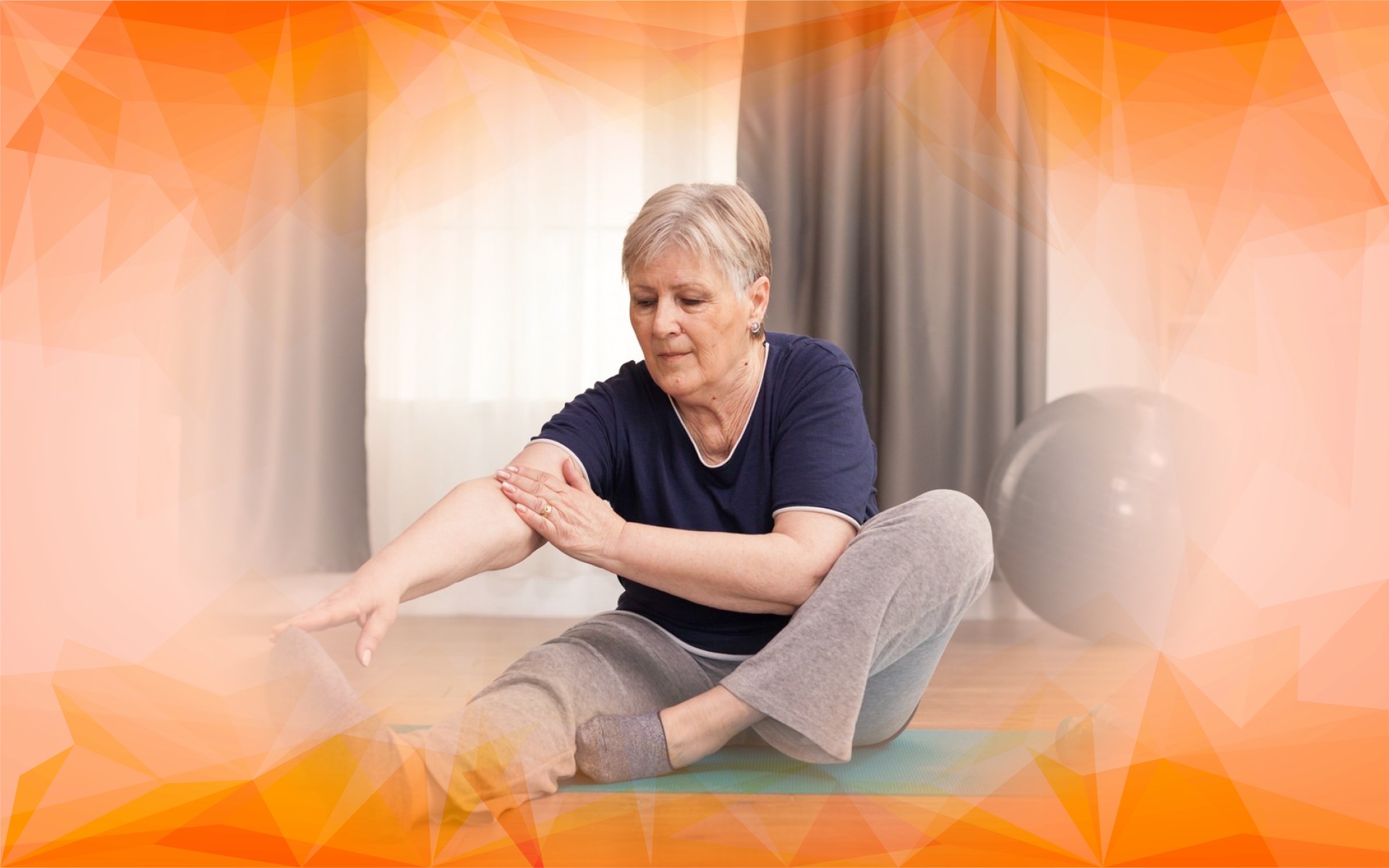Picture this: You’ve been sitting at your desk for hours, and when it’s finally time to stand up, your knees or hips feel stiff or achy. This is sit-to- stand discomfort —a growing problem among adults who spend long hours working at their desks. Simply put, it’s the pain or stiffness you feel in your knees and hips when getting up after sitting, caused by the sudden strain on joints that have been idle for too long. Adjustable sit-stand desks encourage more movement , but as research by Mansoubi et al. shows, switching positions can sometimes create new aches elsewhere, so solving this discomfort is still a challenge.
But what if there was a new, innovative way to cushion your joints and ease this pain—right at its source? That’s the promise of Arthrosamid , an exciting treatment recently introduced in the UK. Arthrosamid uses a gentle, gel-like material called polyacrylamide hydrogel to enhance the joint lining, allowing for smoother movement and less discomfort. In this article, we’ll look at what causes sit-to- stand discomfort , how Arthrosamid works , what the latest research says, and what you can expect if you try this treatment in an office setting.
What Causes Sit-to-Stand Discomfort?
When you stand after sitting for a long time, your knees and hips suddenly have to support your weight, putting extra strain on these key joints . Hours in a chair can leave the muscles around your joints tight and reduce the natural lubrication inside the joints. Stiff muscles and less lubrication mean your joints don’t glide as smoothly, making it uncomfortable to get up. Research by Callaghan et al. also suggests that standing without regular movement can contribute to joint and muscle problems, so balance really is key.
Sit-to- stand discomfort doesn’t just cause physical pain —it can interrupt your focus and productivity. In fact, a study by Nerhood and Thompson found that when offices introduced adjustable sit-stand desks, discomfort dropped by an average of 62 percent, suggesting that changes in office design can make a big difference. Yet many people still struggle with joint pain , even after making ergonomic changes to their workspace. That’s where targeted medical treatments like Arthrosamid come in.
How Does Arthrosamid Work? What Does the Evidence Say?
Arthrosamid is a polyacrylamide hydrogel gel that’s injected directly into the joint, such as the knee . It works by bonding to the joint lining (the synovial membrane), creating a thicker, softer layer that helps absorb shock and improve joint movement. This treatment is particularly helpful for those with early-stage osteoarthritis or stiffness from inactivity.
There’s strong evidence supporting Arthrosamid ’s safety and effectiveness. In a two-year review, Cole et al. found Arthrosamid to be both safe and effective for treating knee osteoarthritis . Another major study by Bliddal et al. showed that Arthrosamid worked as well as, or even better than, the standard hyaluronic acid injections over the course of a year. Participants reported lower pain levels and noticeable improvements in knee function—gains that lasted for up to three years. Many people feel relief within days, making Arthrosamid ideal for busy workers who need quick and lasting comfort.
Recent cohort studies add further insights: patients with early-stage osteoarthritis and no diabetes experienced the most significant improvements. This means choosing the right patients is important for the best results.
Bringing Arthrosamid into the Office
Offering Arthrosamid as an in-office treatment is straightforward. Employers can arrange for trained healthcare professionals to administer injections on-site, in a private and hygienic space. The procedure takes about 20 minutes, is performed with a local anaesthetic, and most people can return to their desks—and light duties—right away. For busy professionals, this means minimal disruption and quick relief.
The best candidates are adults with moderate knee osteoarthritis who still struggle with discomfort despite using ergonomic solutions and regular exercise. Arthrosamid isn’t suitable for people with joint infections or allergies to its ingredients, but it’s generally very safe and comes with a low risk of serious side effects. While more research is needed to track long-term outcomes, early studies are promising—and highlight the importance of careful patient selection.
What Can Patients Expect? And What’s Next?
Nearly 80% of people under 70 see significant improvement within a year of Arthrosamid treatment —often noticing relief in as little as a day, with maximum benefits showing between four and twelve weeks. Patients frequently report easier movement at work and improved concentration, helping them stay healthy and productive.
Looking forward, researchers are exploring whether Arthrosamid works even better as part of a holistic plan—combining regular stretching, sit-stand desks, and other ergonomic strategies. By blending medical and lifestyle approaches, office workers could see even greater relief from discomfort related to long hours at a desk. As the evidence suggests, combining multiple solutions is key to delivering the best possible results.
Conclusion
Sit-to- stand discomfort is a growing issue for adults who spend their days at desks. Arthrosamid brings a new, scientifically-backed option that provides fast and lasting relief—without much disruption to the workday. For occupational health teams and employers focused on worker wellbeing, Arthrosamid offers an effective, convenient addition to state-of-the-art office ergonomics —helping workers move more comfortably and stay productive all day.
References
Gao, H. C. K., Akhtar, M., Creedon, C., Nar, Ö. O., & Lee, P. Y. (2025). THE IMPACT OF PATIENT FACTORS ON THE MINIMAL CLINICALLY IMPORTANT DIFFERENCE OF ARTHROSAMID POLYACRYLAMIDE HYDROGEL INJECTION FOR KNEE OSTEOARTHRITIS: A COHORT STUDY. Journal of Osteoarthritis and Cartilage, . https://doi.org/10.1016/j.joca.2025.02.648
Nerhood, H. L., & Thompson, S. W. (1994). Adjustable sit-stand workstations in the office. Proceedings of the Human Factors and Ergonomics Society Annual Meeting, 38(10), 668-672. https://doi.org/10.1177/154193129403801028
Keywords such as “office-based adults,” “sit-to-stand discomfort,” “Arthrosamid,” and “office-based treatment” have been carefully woven into this article to maintain natural readability and expert authority.
Frequently Asked Questions
Sit-to-stand discomfort refers to pain or stiffness in the knees and hips after sitting for long periods, often due to strain on joints and reduced natural lubrication. Office workers, who are sedentary for hours, are particularly prone to this issue.
Arthrosamid® is a polyacrylamide hydrogel injected into the joint, thickening and softening the lining for smoother movement. This innovative treatment helps relieve discomfort effectively, especially for those experiencing pain from inactivity or early osteoarthritis, with minimal downtime required.
Clinical studies show Arthrosamid® is both safe and effective for knee osteoarthritis. Research indicates it performs as well as, or better than, traditional hyaluronic acid injections, providing significant and lasting improvements in pain and joint function for many patients.
AMSK Clinic specialises in joint care and offers Arthrosamid® with experienced professionals, cutting-edge facilities, and a patient-centric approach. The team ensures careful patient selection for optimal results, delivering prompt and high-quality care tailored to modern office workers’ needs.
Adults with moderate knee osteoarthritis, especially those not fully relieved by ergonomics and exercise, may benefit most. AMSK Clinic carefully assesses each patient’s suitability to ensure maximum comfort, safety, and the best chance of favourable joint improvement outcomes.




